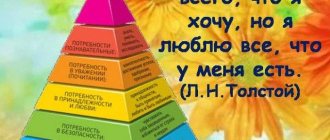Logical thinking is a special form of human intellectual activity. Unlike other forms of similar activity, which have a certain amount of spontaneity and sporadicness, this one is based on strict laws and principles. That is, anyone who wants to think in this way must master certain tools and use them freely.
Logical thinking differs in nature from abstract thinking, although these terms are often confused. One way or another, such a path of intellectual activity is inherent in man as a thinking being. But the degree of development is different. It cannot be called an innate skill. Is it possible to develop logical thinking? Yes, this conclusion suggests itself. The only question is perseverance and time spent.
Contrary to what you might think, it is better to develop in this direction in later years. A teenager's development rate is higher than that of preschoolers and primary schoolchildren. This is due to the peculiarities of the functioning of the brain, its formation and development. For children 6-7 years old, adaptive programs need to be selected. Not tedious and not too complex, so that the child develops a culture of proper mental activity. In the future, this will help you get on the right path and speed up your progress.
What types of logical thinking exist
In psychology, there are several types of the named skill (or, rather, groups of skills and approaches). Based on the main way of perceiving and reproducing information.
Abstract logical thinking
This is the basis of the named concept. When they talk about logic, they mean precisely this part of the activity. Its foundation lies in the ability to non-verbally, with great speed and efficiency, build complex connections, find relationships, notice subtle facts, and classify them. Also, a person with a high culture of this kind is able to quickly sift out the “husks”, find implicit connections, and come to non-trivial conclusions. Independently putting forward complex hypotheses and formulating one’s own theories are also important skills within the framework of this method of mental activity.
An important quality that should not be forgotten is consistency. That is, individual aspects, conclusions, must be consistent with each other and with the general outline of the reasoning. Otherwise, this is “pseudology” and is of little use. Possible flaws in your own reasoning also need to be noticed and corrected in a timely manner. Mistakes are possible even with developed skills.
The difference between the degrees of development lies in the ability to find and eliminate them. The abstract variety requires a long development and forms the basis for all other types. With sufficient mastery, problems no longer arise.
Verbal and logical thinking
A subtype based on verbal abilities. That is, the ability to put your thought into speech and convey it to the audience. Including in writing. Skill plays a huge role in the work of speakers, writers and publicists, writers. It is impossible to do without the ability to consistently formulate thoughts for scientists and workers in the educational environment.
There is also an important pairing skill. Be able to evaluate the speech of another, notice all inaccuracies and contradictions. The same goes for text. The ability to analyze other people's thoughts is indispensable when writing reviews or working as a public speaker (for example, a lawyer). Paradoxically, a well-developed abstract form of logical thinking does not mean that a person will automatically be quite effective in verbal form.
To become competent in this area, you must have a wide vocabulary and literate speech skills. The ability to accurately convey thoughts is born with experience and develops with it. Therefore, everything can be improved with the proper number of hours of practice. Another name for this group of skills is verbal-logical thinking. Specific examples where an understanding of this approach is required are speeches in court. The lawyer is a reference example. On the one hand, he must be able to prepare his own speech and defend his position if the other party or the court has questions. On the other hand, to detect inaccuracies in the opponent’s speech, to catch him using ambiguous wording and so on. Such a person must have an extensive arsenal of skills: from on-site system analysis to competent argumentation, the ability to debate, and quickly navigate the situation.
Visual-logical thinking
Required for situational analysis. It plays a major role in the work of criminologists, forensic experts, and doctors of various specialties. Workers of such profiles deal mainly with visual, visual material: be it the scene of investigative actions, radiography (image), a picture on the screen of an ultrasound machine, or something else in the same spirit. The specialist’s task is to track important visual data and interpret it correctly, integrate it into the overall picture and create a consistent concept. In the case of doctors, it may look like this. A radiology specialist takes a picture, deciphers it and gives general information about the condition of the lungs (optional). He does not make diagnoses. Its contribution is to assess the characteristics of the organ and search for anomalies. This requires developed logical thinking. The therapist or pulmonologist, based on X-ray data and other objective studies, already draws conclusions on the diagnosis. Which requires systematization and in-depth analysis skills.
It is not always necessary for all three varieties to be developed to an equal, high degree. It all depends on the person himself, his desires, professional activities, and experience. It's all about skills and willingness to practice. In any case, you cannot do without logical thinking. It lies at the basis of knowledge. Moreover, one cannot achieve success in academic and scientific activities if one does not master such a rich toolkit.
Thinking: what is it?
Before talking about the types of thinking and their characteristics, let's figure out what is called thinking:
Thinking is a mental process during which cognition and reflection of objective reality occurs through ideas, judgments and concepts. This is the highest form of human creative activity.
Thinking has several important characteristics:
- it helps a person to understand the world indirectly, through mediated experience;
- always relies on information received through the senses;
- operates through generalization, which allows us to highlight the essential qualities of objects and phenomena.
“I think, therefore I exist,” Rene Descartes, a 17th-century mathematician and philosopher, considered thinking to be the most important human ability.
Time has passed, but this idea has not lost its relevance. After all, a lot depends on thinking, or rather on the quality of thought processes: the ability to solve life problems, see cause-and-effect relationships, set and achieve goals, and achieve success.
About the forms of logical thinking. Tools for intellectual activity
The study of forms of logical thinking is carried out by the science of the same name, part of general philosophy - logic. If we skip the boring academic aspects, there are three basic forms in total.
Concept
The concept is a certain definition of an object, phenomenon, indicating its most significant characteristics and features. A concept is the quintessence of a phenomenon, reflecting its unique properties and those qualities that distinguish an object from others. People know why an apple is an apple and not a pear and how these fruits are different. Or they understand what a car, a tree, a table, a clock is. The list goes on.
The enormous importance of this logical form of thinking is revealed when working with abstract phenomena. That is, those that do not have a material, real expression and equivalent. They cannot be touched or seen, but they are there. These are ideal matters: life, death, love, eternity and others. Not necessarily philosophical categories. For example, warm, cold. They cannot be seen, but they can be experienced experimentally. These phenomena are somewhere between abstraction and concreteness. With the help of the concept, you can introduce a variety of phenomena into circulation and work with them as if they really exist. Even if they are ideal and have no real equivalent.
From this we can conclude: logical thinking is aimed at the maximum degree of abstraction. Roughly speaking, it doesn't matter what color the apple is. It is important that this is a fruit, round in shape, with a certain taste, growing on a tree called an apple tree and the like. Only essential information. Specifics are used as needed, if necessary for the purposes of the study.
Concepts can be worked with as individual objects. They can be summarized and compared. Comparisons are usually made using visual material. To build relationships, so-called Euler circles are used. Concepts are compared by volume. A group of relationships is possible.
- Complete coincidence. Usually we are talking about synonyms. Since the Russian language and Slavic languages in general are rich in synonyms, there will be many such options.
- Partial match. When the volumes partially coincide, they intersect. Typically, such options are considered in a specific context. For example, musicians playing the violin. And musicians who play the cello. There will be partial overlap where there are people who play both of these instruments at once.
- Some concepts are broader in scope and include groups of other concepts. This is a common case in analysis. For example, carriages and freight cars. It is clear that freight cars are a smaller concept. Since there are other types of carriages: passenger cars, etc. In the same way, you can build relationships between people and Europeans, apple trees and garden crops, the sun/stars/celestial bodies (this is a more complex relationship), and so on.
- Mismatch of concepts. When there are no intersection points. Animals and soccer balls, pens and pencils. Sometimes it can be difficult to delimit the scope of concepts, especially if they are close, but not identical in meaning. It is important to adhere to terminological accuracy. Then there will be no problems in determining the ratios.
The concept as a separate form and at the same time a tool is used as a basic structural unit for broader types - judgments and inferences. Individual characteristics are not taken into account during comparison. The assessment is carried out based on the scope of the concept.
Judgment
A judgment is a statement in which something is affirmed or denied regarding an object. This is a standard definition and can be found in any academic logic textbook. What does this really mean?
A judgment is a certain relationship between an object and what is affirmed or denied about it. Concepts and various categories are used as a basis.
For example. All people are living beings.
This statement. People are a concept about which a certain phenomenon is asserted. In this case, it is stated that people are living beings. Such statements have their own principles of construction and structure. The subject, that is, that about which the affirmation/denial is given, is also called in formal logic the subject (denoted as S). And what is affirmed or denied is a predicate (denoted as P). These are not random terms, but are used to achieve an even greater degree of abstraction. You can construct this and any other statement according to a certain scheme. In this case, it will be like this: All S are (or translated into Russian - are or are) P. Other options are also possible:
- no S is a P (peaches are not vegetables);
- some S are P (some first-graders play football);
- some Ss are not Ps (some women don't wear makeup).
The construction of a judgment scheme occurs automatically after some practice. Formalization with a clear description is needed only when working with complex materials or conducting complex research.
Judgments may be incomplete, but this is a special case.
Next, judgments are applied to obtain some new knowledge. In the context of a larger structure, inferences, propositions are called premises. That is, what is used as source material.
Inference
The most general form is new knowledge obtained from two or more premises (more is rare; usually logic is built along a chain, from one to another without mixing everything into one pile). The classic method of inference is the syllogism.
It also has its own structure. Based on two premises and a conclusion. To illustrate: all people love ducks → some ducks are acorns → therefore all people love acorns.
The example is meaningless from a content point of view. But clear in terms of form. Indirectly, through the known, a person receives previously unknown knowledge. To work with inferences, formalized types of judgments are used:
- all S are P;
- some S are P;
- all S are P.
This syllogism is constructed according to this structure. There are some rules for obtaining information based on this principle. They are called syllogism figures. There are 4 of them in total, according to a possible combination of initial premises.
There are inferences of an implicit type, when in one sentence something is affirmed or denied twice (dilemmas). The rules for solving and obtaining new knowledge in this case will be different.
In addition to the actual three forms of logical thinking, the researcher also has other tools at his disposal:
- Analysis. Decomposition of a complex phenomenon into parts. When analyzing a complex scientific article, the researcher looks for the main idea, theses, argumentation, that is, those elements that make up the text. Complex concepts can also be analyzed. Looking for signs, properties of an object, determining the most significant ones. Analysis is one of the main tools of logical thinking.
- Synthesis. The opposite phenomenon. The classic option is to derive your own definition of the subject. To understand what to include in a definition, the researcher works with its properties. Identifies the most common and important ones. Compiles them and embeds them in the definition. This work refers to the mental connection of several important factors. Synthesis is possible in the study of other phenomena, when individual facts come together to form the overall picture. Analysis and synthesis go hand in hand.
- Analogy. Analogy is also classified as a logical operation of thinking. Transferring properties of one object to another. Such liberties are not always permissible. However, it is an effective way to change your perspective and take a closer look at a previously unknown phenomenon. Many discoveries in aerodynamics were made in this way. By observing birds and insects, people were able to better understand its principles.
- Deduction. A way of logical thinking from the general to the specific. A type of inference. A typical example. All fruits are sweet. Therefore, apricot is sweet. In this case, the conclusion is drawn on the basis that the apricot is a fruit and therefore has the properties of all fruits. As a rule, such knowledge is true. Apart from some cases. It is possible to use deduction in more complex, subtle situations. The deductive method is widespread in medicine, areas associated with intensive analysis of circumstances.
- Induction. The opposite phenomenon. Movements from the particular to the general. Apricot is sweet. Therefore, all fruits are sweet. This statement is clearly false. You need to be careful when using such a tool. Logicians adhere to the law of sufficient reason. Here it is broken. Because a certain property is unreasonably transferred to an entire class of objects. Inductive knowledge often produces false conclusions. You can move from the specific to the general when putting forward hypotheses. This allows you to look at an object or phenomenon from a different perspective.
The definition of instrumentation is incomplete. It is possible to use other operations of logical thinking. The higher the level of development of thinking abilities, the more effective and easier it is to use these tools. With sufficient practice, the thinker ceases to notice intermediate operations; they are carried out easily and organically.
In complex situations, the number of operations can reach hundreds or even thousands. Depending on the nature of the subject of research.
Main types
They are divided by functions and capabilities. The classification includes three successive stages of thinking development. They are created on the basis of genetic principle
Visually effective type
Characterized by observation of real objects and their relationships in reality. Such cognitive action is a fundamental element of any mental processes. This type of mental activity is actively used by children under 3 years of age. Gradually developing, they:
- compare things with each other, placing one on top of another;
- conduct experiments by breaking their favorite toy in half;
- synthesize by building various elements from Lego;
- make a classification by sorting the cubes by color.
The baby does not plan anything or set a goal; he thinks during the action, since it precedes his thoughts. But in adults, this type also occurs when rearranging furniture or using equipment that has never been used. In these cases, everything cannot be foreseen and controlled; something can definitely get out of control.
Visual-figurative type
Relies on representation and images. It promotes analysis, comparison and generalization. This type is closely associated with imagination. It manifests itself in children aged 4 to 7 years, they are able to learn things without using practical experience, they do not need to identify an object by touch, they perceive and remember it visually. For example, clarity is manifested in the fact that when asked: “Why is the car moving?” - the child may answer: “Because it is green.”
This type also manifests itself in adult life when planning repairs. A person imagines the interior design in advance, how he would like to arrange the furniture, what color wallpaper to choose or paint the walls. Visual-figurative thinking makes it possible to think through all things to the smallest detail, but they are invisible.
Verbal-logical type
This is a later type of development of mental activity. It is characterized by the use of various terms and the compilation of logical structures. Thanks to this, a person is able to establish common connections and predict the development of processes in nature or society. This type proceeds according to a specific sequence: first a judgment is involved, then another is added to it, and when they are combined, a conclusion arises.
How to check the degree of development of logical thinking
Psychologists diagnose logical thinking. In some cases, teachers can assess skills and the degree of maturity of intellectual activity. Determining the level is quite difficult. Because errors are possible. A discount is made on the new conditions in which the test subject is located, on the complexity of the didactic material and other factors. Because not all forms of logic are equally developed in one person. Especially if he did not undergo special training and did not train. The average indicators are recorded in writing in order to compare the initial and final results after a certain development.
The tasks and assignments are selected by a psychologist. Usually, for testing purposes, it is enough to selectively compile material from Eysenck questionnaires and similar ones. Also included are questions from the Wonderlica questionnaire (Vanderlik), processed in Russian.
The task is to examine the extent to which the subject is able to use the tools of formal logic. Without special training, it is used chaotically, without a system.
Psychologists use logical tasks as effective material. There are many of them on the Internet, but not many check the actual logic. Therefore, it is better to treat the material on the sites with a sufficient degree of skepticism.
Conversations show good results. In the course of the subject’s reasoning, inaccuracies, harmony of statements and arguments, features of movement and trajectories of thoughts are already visible. Not all psychologists are competent enough to immediately talk and evaluate the reasoning of their patients. Therefore, out of necessity, they attract specialists who are familiar with formal logic and freely use its methods in practice.
In some cases, it is advisable to use text materials, simple journalistic articles, and popular science texts. This will allow you to evaluate the degree of effectiveness of working with what you have written.
Psychologists have many more methods at their disposal. For example, visual material on cards. The patient is provided with a series of picture cards as stimulus material. They depict situations. The task is to arrange the displayed events in exact sequence. Then tell the story that turned out.
The examination may take a lot of time. Depends on what aspects of logical thinking the specialist evaluates. On average, diagnosis takes from 60 to 180 minutes. Plus or minus.
Logical thinking tests are also carried out as part of the identification of mental disorders. But here it is enough to limit ourselves to the “exclude the unnecessary” techniques and working with cards. As described above. In patients with schizophrenia and psychosis, a split in the processes of intellectual activity is observed. Therefore, they are not capable of even basic logical thinking. Disturbances in logical thinking also occur in healthy people. But not in such a rude manner. They are rather inaccurate in nature. But in general, the nature of the reasoning is correct.
If a person does not have the opportunity to contact a psychologist, you can test yourself. For this, resources with Eysenck and Wonderlick tests will come to the rescue. It is not necessary to undergo diagnostics often. Selective development of certain aspects of intellectual activity is possible. It turns out that the tasks are solved without problems, but in other situations the subject is helpless or is at the same level as he was. The information content of such self-diagnosis is minimal.
Properties of the thought process
- Direction is the main feature of thoughts. This indicates that every statement and reflection has its own completeness and purpose.
- Direction both to the future and to the past - a person can think about what happened to him yesterday, or, conversely, analyze what to do in a given situation.
- Concept formation using mental activity. She tries to characterize, organize, determine the similarities and differences of things.
- Logic is an essential element of reasoning.











